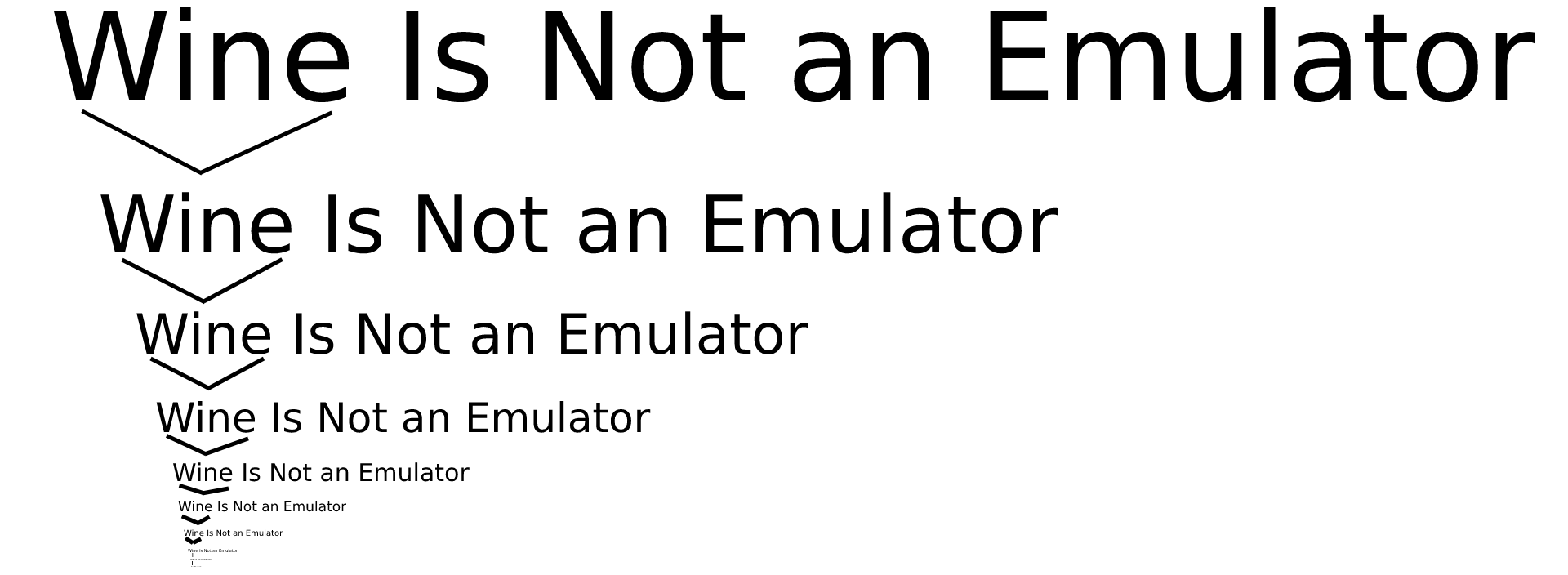this post was submitted on 06 Aug 2024
547 points (97.6% liked)
linuxmemes
22762 readers
456 users here now
Hint: :q!
Sister communities:
Community rules (click to expand)
1. Follow the site-wide rules
- Instance-wide TOS: https://legal.lemmy.world/tos/
- Lemmy code of conduct: https://join-lemmy.org/docs/code_of_conduct.html
2. Be civil
- Understand the difference between a joke and an insult.
- Do not harrass or attack users for any reason. This includes using blanket terms, like "every user of thing".
- Don't get baited into back-and-forth insults. We are not animals.
- Leave remarks of "peasantry" to the PCMR community. If you dislike an OS/service/application, attack the thing you dislike, not the individuals who use it. Some people may not have a choice.
- Bigotry will not be tolerated.
- These rules are somewhat loosened when the subject is a public figure. Still, do not attack their person or incite harrassment.
3. Post Linux-related content
- Including Unix and BSD.
- Non-Linux content is acceptable as long as it makes a reference to Linux. For example, the poorly made mockery of
sudoin Windows. - No porn. Even if you watch it on a Linux machine.
4. No recent reposts
- Everybody uses Arch btw, can't quit Vim, <loves/tolerates/hates> systemd, and wants to interject for a moment. You can stop now.
5. 🇬🇧 Language/язык/Sprache
- This is primarily an English-speaking community. 🇬🇧🇦🇺🇺🇸
- Comments written in other languages are allowed.
- The substance of a post should be comprehensible for people who only speak English.
- Titles and post bodies written in other languages will be allowed, but only as long as the above rule is observed.
Please report posts and comments that break these rules!
Important: never execute code or follow advice that you don't understand or can't verify, especially here. The word of the day is credibility. This is a meme community -- even the most helpful comments might just be shitposts that can damage your system. Be aware, be smart, don't remove France.
founded 2 years ago
MODERATORS
you are viewing a single comment's thread
view the rest of the comments
view the rest of the comments

I've never worked with Haskell, but I've been meaning to expand my programming repertoire (particularly since I don't get to do much coding at work, let alone learn new languages) and this makes for a nice opportunity, so I wanna try to parse this / guess at the syntax.
I assume
iterate function argapplies somefunctiontoargrepeatedly, presumably until some exit condition is met? Or does it simply create an infinite, lazily evaluated sequence?( )would be an inline function definition then, in this case returning the result of applying++suffixto its argument (which other languages might phrase something likearg += suffix), thereby appending " Is Not an Emulator" to the function argument, which is initially "WINE".So as a result, the code would produce an infinite recurring "WINE Is Not an Emulator Is Not an Emulator..." string. If evaluated eagerly, it would result in an OOM error (with tail recursion) or a stack overflow (without). If evaluated lazily, it would produce a lazy string, evaluated only as far as it is queried (by some equivalent of a
headfunction reading the first X characters from it).How far off am I? What pieces am I missing?
You're pretty much right on the money. In Haskell, a
Stringis a type synonym for[Char], so we can use the list concatenation function++to join strings.++is an infix function i.e.[1,2,3] ++ [3,4,5] = [1,2,3,3,4,5](which will be equivalent to doing(++) [1,2,3] [3,4,5]by virtue of how infix functions work in Haskell). When we do(++ "a"), we create a partially applied function. Now, we can supply another string to it and it will add"a"at the end of it.iterate f xproduces a lazily evaluated sequence[x, f x, f f x, ...]. So, to get the nth entry, we can dowine !! nwhere we use another infix function!!. With partial application, we can modify the definition ofwineto create a function that takes anIntn and spits out the nth entry of it by doingWe needed to wrap the
!!inside parentheses because it's an infix function.$just changes the order of application. (IIRC, it's the least significant function.) You can think that we're wrapping whatever's on the right of the$by parentheses. Now we can dowine 2instead ofwine !! 2to get"WINE Is Not an Emulator Is Not an Emulator".I'm by no means a Haskell expert. (I'm not even a professional programmer lol.) So, if someone would like to add some more details, they're more than welcome.
Edit: A much more readable version might be
I think that's the part I was most confused by. I'm coming mostly from Java and C, where
++would be the unary operator to increment a number. I would have expected that symbol in a functional language context to be a shorthand for+ 1. The idea of it being an infix function didn't occur to me.Partial applications I remember from a class on Clojure I took years ago, but as far as I remember, the functions always had to come first in any given expression. Also, I believe
partialfills the arguments from the left, so to add a suffix, I'd have to use a reversedstrfunction. At that point, it would probably be more idiomatic to just create an inline function to suffix it. So if my distant recollection doesn't fail me, the Clojure equivalent of that partial function would be#(str % " Is Not an Emulator").iterateworks the same though, I think, so the whole expression would be(def wine (iterate #(str % " Is Not an Emulator") "WINE") )This code was typed on a mobile phone in a quick break based off of years-old memories, so there might be errors, and given it was a single class without ever actually applying it to any problems, I have no real sense for how idiomatic it really is. I'll gladly take any corrections.
NGL though, that last, readable version is sexy as hell.